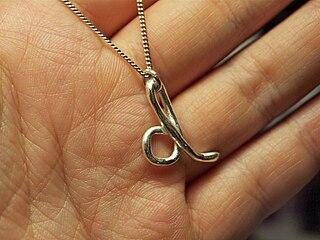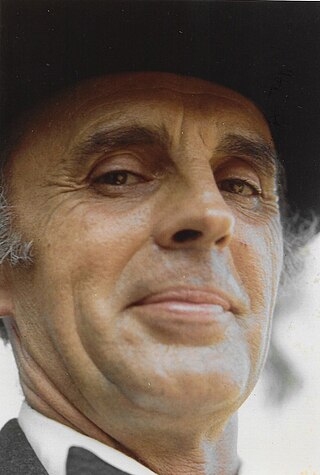Tim McCreight | |
|---|---|
| Born | 1951 (age 72–73) |
Tim McCreight (born 1951) is an American artist who specializes in metalsmithing, particularly in jewelry. He is also an author of books referring to metalsmithing. [1]
Tim McCreight | |
|---|---|
| Born | 1951 (age 72–73) |
Tim McCreight (born 1951) is an American artist who specializes in metalsmithing, particularly in jewelry. He is also an author of books referring to metalsmithing. [1]
Tim McCreight was born in 1951 in Philadelphia, Pennsylvania. He attended The College of Wooster from 1969 to 1973 and received a BA degree in sculpture under Sufi Ahmad. After College of Wooster, he graduated from Bowling Green State University in 1975, receiving a MFA degree in jewelry and metalsmithing under Harold Hasselschwert and Chuck Evans. [2]
McCreight taught at the Maine College of Art from 1988 to 2005 and at Worcester Center for Crafts for 12 years before that. He also served on several boards of directors, including the Haystack Mountain School of Crafts and the Society of North American Goldsmiths (SNAG) where he also served as president. He is the founding director and communications officer for the Precious Metal Clay Guild. [3]
McCreight has taught scores of workshops in the US, Canada, Europe, and Japan. He is perhaps best known for his textbooks, which cover subject matters as diverse as knifemaking, casting, jewelry techniques, rendering, and design. He has also created a half dozen instructional videos that are widely respected for their clarity and breadth. In addition to his own books, he has designed and edited books for authors from several countries through his publishing company Brynmorgen Press. [4]
In 2014 McCreight co-founded the Toolbox Initiative, which distributes donated tools and supplies to jewelers with limited resources especially in West Africa.

Metal clay is a crafting medium consisting of very small particles of metal such as silver, gold, bronze, or copper mixed with an organic binder and water for use in making jewelry, beads and small sculptures. Originating in Japan in 1990, metal clay can be shaped just like any soft clay, by hand or using molds. After drying, the clay can be fired in a variety of ways such as in a kiln, with a handheld gas torch, or on a gas stove, depending on the type of clay and the metal in it. The binder burns away, leaving the pure sintered metal. Shrinkage of between 8% and 30% occurs. Alloys such as bronze, sterling silver, and steel also are available.

A metalsmith or simply smith is a craftsperson fashioning useful items out of various metals. Smithing is one of the oldest metalworking occupations. Shaping metal with a hammer (forging) is the archetypical component of smithing. Often the hammering is done while the metal is hot, having been heated in a forge. Smithing can also involve the other aspects of metalworking, such as refining metals from their ores, casting it into shapes (founding), and filing to shape and size.
Foldforming is a technique of metalworking whereby metal is folded, repeatedly forged and annealed, and unfolded; at which stage it generally has a dramatic new three-dimensional form. While alternate spellings abound (e.g., fold-forming, fold forming, Foldforming, and even form-folding, the definitive book "Foldforming" by Charles Lewton-Brain consistently uses the spelling of foldforming as one lowercase word.

Shilpa Shastras literally means the Science of Shilpa. It is an ancient umbrella term for numerous Hindu texts that describe arts, crafts, and their design rules, principles and standards. In the context of Hindu temple architecture and sculpture, Shilpa Shastras were manuals for sculpture and Hindu iconography, prescribing among other things, the proportions of a sculptured figure, composition, principles, meaning, as well as rules of architecture.

Art jewelry is one of the names given to jewelry created by studio craftspeople in recent decades. As the name suggests, art jewelry emphasizes creative expression and design, and is characterized by the use of a variety of materials, often commonplace or of low economic value. In this sense, it forms a counterbalance to the use of "precious materials" in conventional or fine jewelry, where the value of the object is tied to the value of the materials from which it is made. Art jewelry is related to studio craft in other media such as glass, wood, plastics and clay; it shares beliefs and values, education and training, circumstances of production, and networks of distribution and publicity with the wider field of studio craft. Art jewelry also has links to fine art and design.

An earwire is a bow of wire, looped to fasten an earring to a pierced ear. It is generally made of precious metal or hypoallergenic surgical steel. Earwires are available commercially, as jewelry findings, but some jewelers make their own. Earwires and similar forms can be made with simple wire wrap techniques. There are a variety of both commercial and homemade jigs to improve the uniformity and speed of creation. A simple homemade jig can be made with a block of wood and several nails, smooth metal pins or bolts.

Planishing is a metalworking technique that involves finishing the surface of sheet metal by finely shaping and smoothing it.
Arline Fisch is an American artist and educator. She is known for her work as a metalsmith and jeweler, pioneering the use of textile processes from crochet, knitting, plaiting, and weaving in her work in metal. She developed groundbreaking techniques for incorporating metal wire and other materials into her jewelry.
Diane Falkenhagen is an American artist, she is known as a metalsmith and creates mixed-media custom jewelry which incorporates two dimensional imagery. She is based in Texas.

Fred Fenster is a metalsmith and professor emeritus of the University of Wisconsin at Madison where he taught art and education. He is particularly known for his work in pewter, influencing generations of metalsmiths. Fenster was named a Fellow of the American Craft Council in 1995.
Gary Lee Noffke is an American artist and metalsmith. Known for versatility and originality, he is a blacksmith, coppersmith, silversmith, goldsmith, and toolmaker. He has produced gold and silver hollowware, cutlery, jewelry, and forged steelware. Noffke is noted for his technical versatility, his pioneering research into hot forging, the introduction of new alloys, and his ability to both build on and challenge traditional techniques. He has been called the metalsmith's metalsmith, a pacesetter, and a maverick. He is also an educator who has mentored an entire generation of metalsmiths. He has received numerous awards and honors. He has exhibited internationally, and his work is represented in collections around the world.
Rio Grande is a jewelry-making equipment, tools and supplies company located in Albuquerque, New Mexico. Founded in 1944 by jeweler Saul Bell, the company is run by Arien Gessner (CEO).

Lisa Gralnick is an American contemporary metalsmith, studio jeweler and academic. She works in the field of craft and art jewelry. Gralnick says: "I have chosen to make jewelry, which is traditionally considered 'craft', and I do enjoy the processes and techniques that allow me to execute my work without technical faults. But 'craft' is only a means to an end for me, as it is for many artists. My desire to push the limits of jewelry and expand on them, to comment on its traditions and associations, is more the concern of any artist."

Florence Lisa Resnikoff was an American artist and educator in the fields of metals and jewelry.

Byron August Wilson (1918–1992) was an American mid-20th century artist and educator, known for his jewelry design.
Linda Threadgill is an American artist whose primary emphasis is metalsmithing. Her metal work is inspired by forms of nature and the interpretations she gleans from the intricate patterns it presents. She explores the foundation of nature to allude to nature and transform it into re-imagined, stylized plants forms.

In metalwork, reticulation refers to a decorative surface finishing technique involving the application of localised heat to the surface of a metal object. Reticulation is typically performed on alloys of silver and copper or of gold and copper.
Hiroko Sato-Pijanowski is a Japanese jewelry designer, artist, author and educator. Sato-Pijanowski is credited with introducing Japanese materials and techniques to American metal working. She is based in Yokohama in Kantō, Japan.
Marilyn da Silva is an American sculptor, metalsmith, jeweler, and educator. She teaches and serves as a department head at the California College of the Arts in the San Francisco Bay Area. Da Silva has won numerous awards including honorary fellow by the American Craft Council (2007).
Charles Robert Winston was an American jeweler, sculptor, and educator. He was known for his organic forms and sculptural jewelry in 1950s and 1960s. Winston was a co-founder of the Metal Arts Guild of San Francisco, a non-profit, arts educational organization. In 1997, he was honored as a Fellow of the American Craft Council.